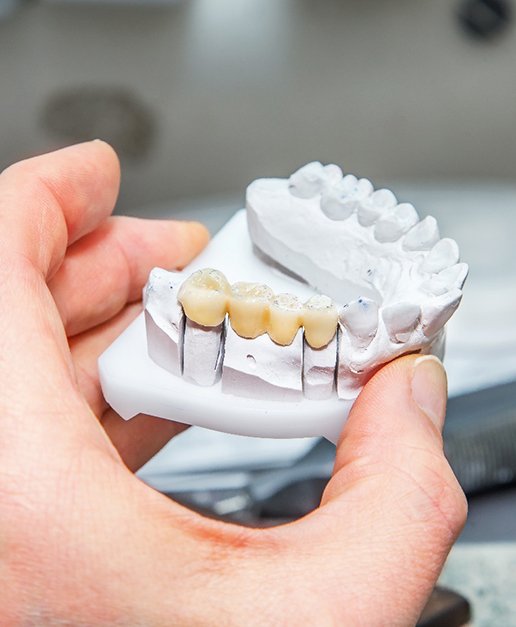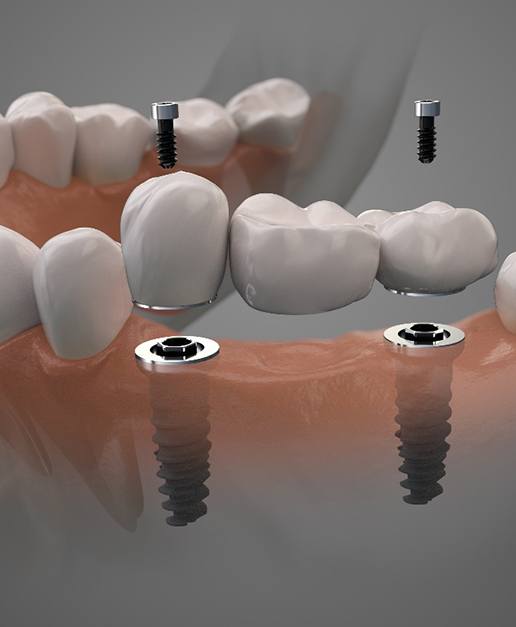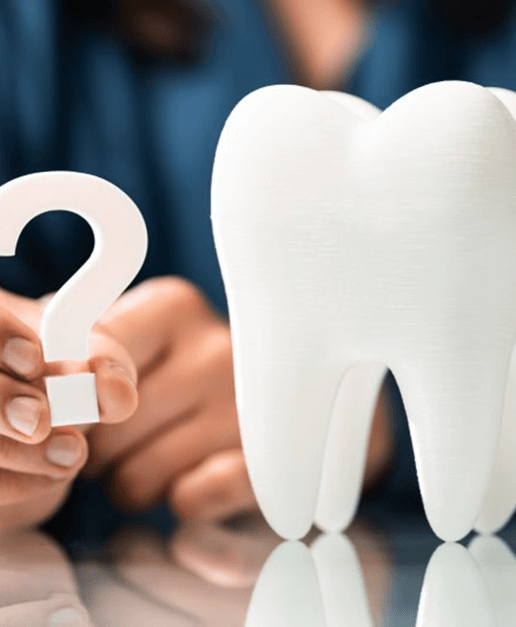Dental Bridges – Newport, RI
Fill the Gaps in Your Smile
When you’re missing a tooth, it can become very prominent when you show off your smile. In addition to that, it can make it more difficult to do things that you once found easy, like chewing your food and speaking clearly. You can also experience a variety of other issues, like dental drift, if you don’t have it replaced quickly. Fortunately, at Newport Dental Associates, we offer dental bridges to restore the appearance and function of your pearly whites. To learn more about how you can fill the gaps in your smile, give us a call!
Why Choose Newport Dental Associates for Dental Bridges?
- High-Quality Materials for Lasting Results
- We Welcome Dental Insurance
- Serving Newport for 30+ Years
What is a Dental Bridge?

A dental bridge is exactly what it sounds like. Its function is to “bridge” the gap where your tooth is missing. Usually, a bridge replaces anywhere from one to four teeth in a row. It is comprised of two crowns and a number of pontics, or replacement teeth. The crowns are anchored onto your adjacent healthy teeth (or dental implants). Dental bridges can be made from a variety of durable and natural-looking materials.
Types of Dental Bridges

There are two different types of dental bridges, and the type you get will depend on the number of teeth you are missing and where they are located in your mouth.
Traditional Dental Bridges
If you still have healthy teeth on either side of the gap that needs to be filled in, a traditional bridge is a great option. The teeth that support the crowns are called “abutment teeth.” They will be altered slightly so the bridge can fit comfortably in your mouth. Usually, this restoration can be placed in just a few appointments.
Implant Bridges
If you don’t have healthy adjacent teeth next to the gap, you could opt for an implant bridge. This type of bridge uses dental implants as an alternative. Implants can be used when there are three or more missing teeth in a row. Implant bridges tend to last longer than traditional bridges, and the can prevent bone loss over time.
The Benefits of Getting a Dental Bridge

Here are just some of the numerous benefits you can experience when you replace your missing tooth/teeth with a dental bridge:
- Prevents dental drift
- Improves confidence
- Allows for easy chewing
- Improves speech articulation
- Lowers risk of oral health issues
- Cost-effective
Dental Bridges FAQs

If you are missing multiple consecutive teeth, then replacing them with dental bridges may be a viable option for you. Although the treatment may be beneficial for renewing your smile, there may be various factors that you’ll want to know as much as you can about. To help you be more well-informed, here are several of our most commonly asked questions about dental bridges in Newport. Read on to learn more or feel free to reach out to us if you don’t see the information you’re seeking!
Is Getting a Dental Bridge Painful?
Much like all of our other dental procedures, our team will first completely numb your mouth with a local anesthetic before beginning any work on your teeth. This will allow us to safely perform the preparations while keeping you pain-free throughout the entire process. Though you won’t expect to feel discomfort during your visit, it’s normal to experience some sensitivity in your underlying teeth for a few days. Fortunately, this can be alleviated with over-the-counter or prescribed pain medications. Furthermore, since the dental bridge will help maintain the positions of your other teeth, they can end up helping to prevent discomfort that can come from dental drift.
Do Dental Bridges Feel Natural?
After several days of wearing your dental bridge, it should begin to feel much more natural in your mouth. Not only are they secured to the adjacent teeth on either side of the gap, but they’re also constructed out of incredibly durable materials, allowing them to withstand excessive chewing similar to your tooth enamel. This means it shouldn’t feel unusual while eating your meals or even speaking with friends and family. By cementing the bridge onto your prepared abutment teeth, you should experience a very comfortable result, as your restoration will be specifically designed to fit your unique smile.
How Many Teeth Can a Dental Bridge Replace?
Depending on your personal needs and situation, a dental bridge may be able to replace around one to four consecutively missing teeth. That said, in general, these restorations are reserved for only replacing one or two pearly whites. The reason is, the longer the bridge extends across the mouth, the less stable it’ll be in the long run. Trying to replace three or more teeth in a gap can be riskier and may cost you more money to address if it doesn’t work out. However, you can significantly lower this risk if you choose to get implant bridges, as the bridge will be anchored to your jawbone via metal posts that’ll provide exceptional strength and stability.
Can You Take a Dental Bridge Out?
You should not be able to remove a dental bridge from your mouth. These prosthetics are meant to stay on your smile for multiple years after they’ve been placed. The only one who should be able to take them out is your dentist, whether for adjustments or replacements. Unfortunately, some healthcare professionals often refer to partial dentures as “removable bridges”—hence the confusion between the two treatments. While similar to dental bridges in that they replace multiple missing teeth, partials can typically be removed by the patient whenever they choose, whereas the former will be permanently fixed in position.